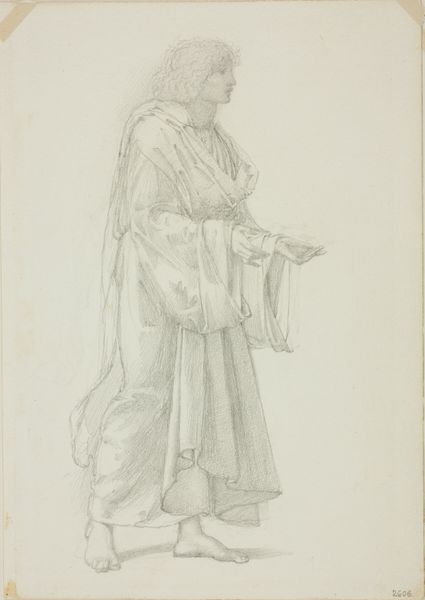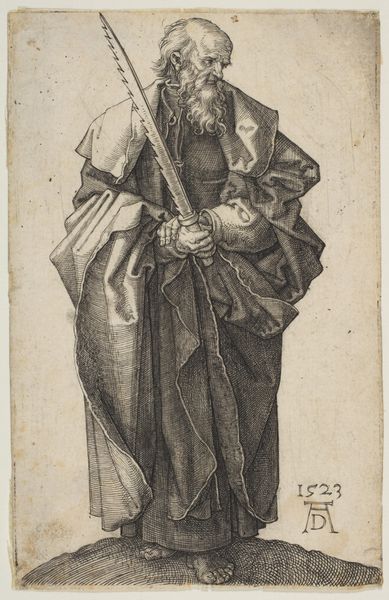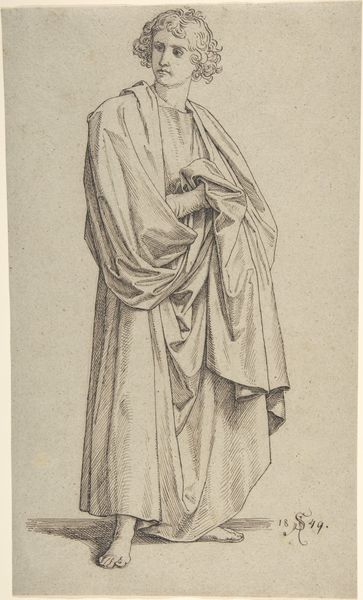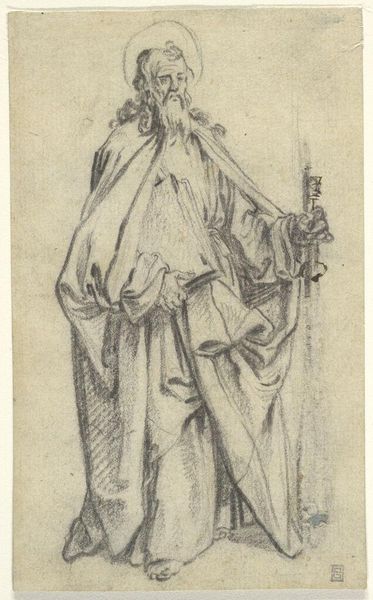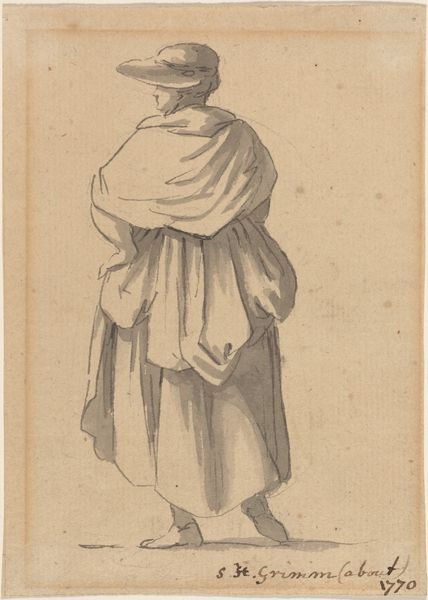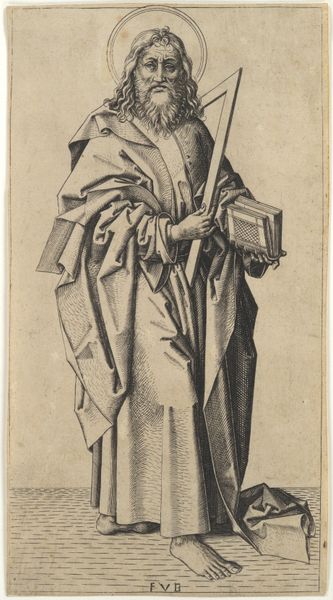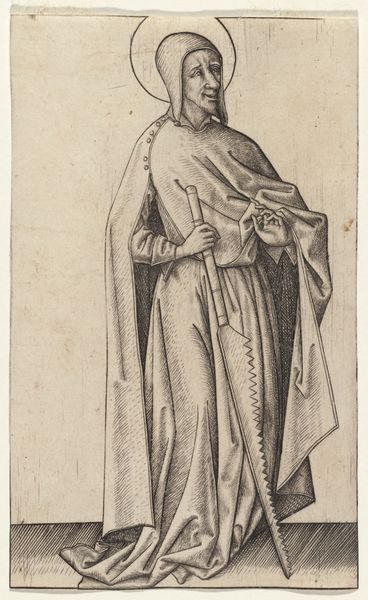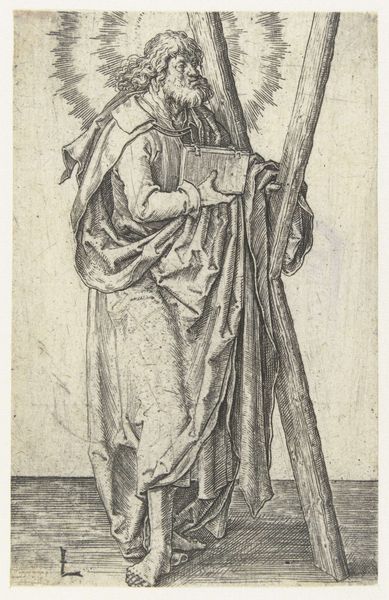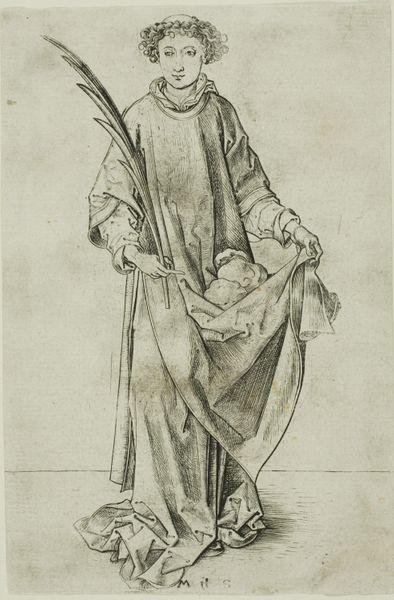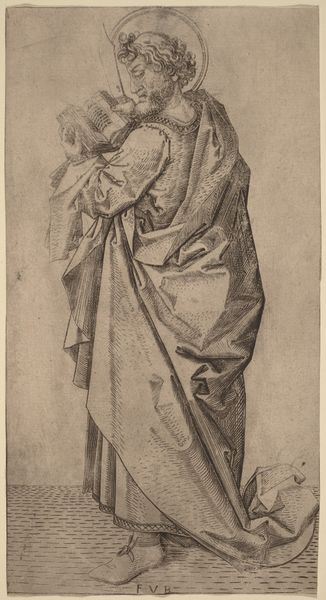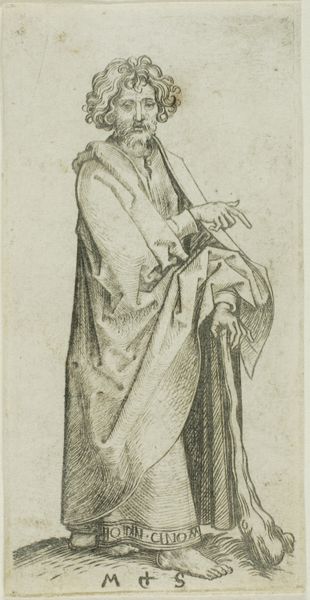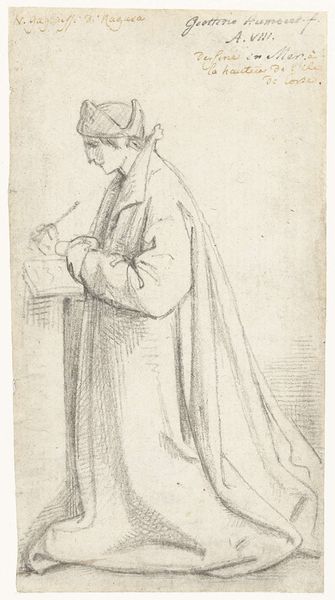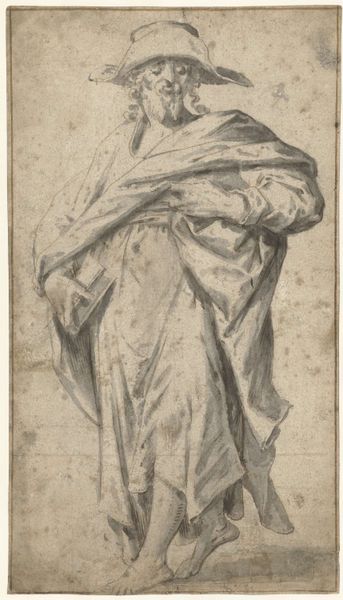
drawing, print, engraving
#
portrait
#
drawing
# print
#
figuration
#
history-painting
#
northern-renaissance
#
engraving
#
sword
Dimensions: 10 13/16 x 5 1/4 in. (27.4 x 13.3 cm) (maximum dimensions)
Copyright: Public Domain
Curator: Look at this engraving; it's Hans Baldung's "Saint Catherine Leaning on a Sword," made between 1498 and 1508. What’s your initial read? Editor: It evokes a sense of serene strength, I think. The stark lines and the way the light catches her face – there's a powerful sense of quiet determination. What strikes me most is her hand on that massive sword and then looking at her composed demeanor despite that potential for violence. I imagine many questions surround the symbolism. Curator: Absolutely. Thinking about the materials, engravings are fascinating because each line demands meticulous, often repetitive, labor. Here we observe the transfer of artistic intent through a physically demanding process and we note the consumption by collectors of devotional or commemorative imagery. And the print, of course, also aided in wider circulation and standardized reproduction. Editor: Yes, and as a figure, Saint Catherine embodies that intersectionality of faith, power, and gender. She was, after all, an incredibly important early Christian saint. She defied expectations and social norms through her intellectual prowess and ultimately gave her life, or chose death, rather than abandon her beliefs. Placing her within this northern renaissance artistic expression helps explore constructions of female identity. Curator: The details are so fine, almost like looking at textile work in metal. The draping of her gown, the meticulous texture of her halo… How do you think that might influence interpretation? I mean, to focus on surface? Editor: It draws our gaze toward what that kind of dress code represents - and, in contrast, perhaps, how at odds this figure stands from standard roles because here we see that this "saint" has power by means of a very serious sword! How potent is that visual contrast as she becomes an active participant in the play between belief systems and what could be. Curator: A powerful point. Thinking about the marketplace—prints like this, accessible as they were, put devotional iconography into more hands than ever before. This shift democratized faith, yet simultaneously made it a commodity. How do we weigh that ethical dimension, knowing the labor behind this was meticulous? Editor: By understanding both. The access the printing press created intersected with established social hierarchies and emerging forms of capitalist expression. So even as images like this disseminated new ideas, the social systems were not yet in alignment. I’m intrigued. Curator: Yes, there are definitely layers to keep working through here. Editor: Indeed.
Comments
No comments
Be the first to comment and join the conversation on the ultimate creative platform.
